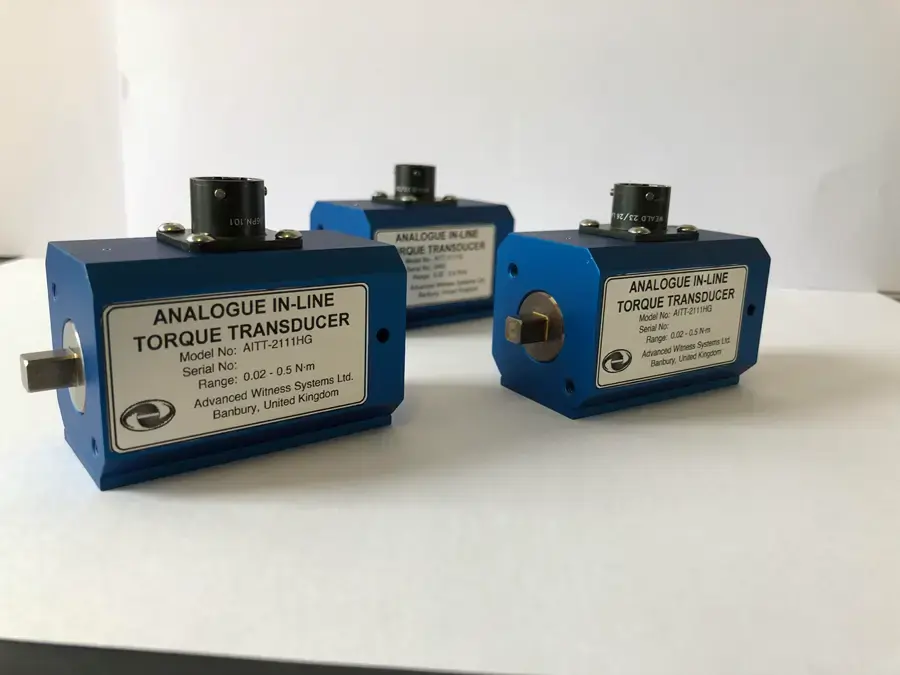
Torque transducers come in a variety of designs, types and ranges. In this blog we will discuss what a torque transducer is, when they might be used within multiple industries, and the current UK torque transducer calibration standard BS 7882:2017.
A torque transducer, also known as a torque sensor, is a device used to accurately measure the amount of torque being applied. This torque could be from a torque wrench or torque screwdriver. There are a variety of designs of torque transducers measuring via different methods. There are also different types for different tasks, such as In-Line, Annular and Rotary, each being specifically tailored to a different use.

There are two main types of torque transducers, reaction and rotary.
Static torque transducers are used to measure stationary torque, also known as static or non-rotational torque. One face of the static transducer is secured in a fixture, whilst the rotational element of the equipment under test (i.e. the drive on a torque wrench) is placed into the other face. Typical uses for static torque transducers include the calibration and verification of manual torque tools and verifying the torque output of rotary torque tools with additional various types of simulation fixtures.
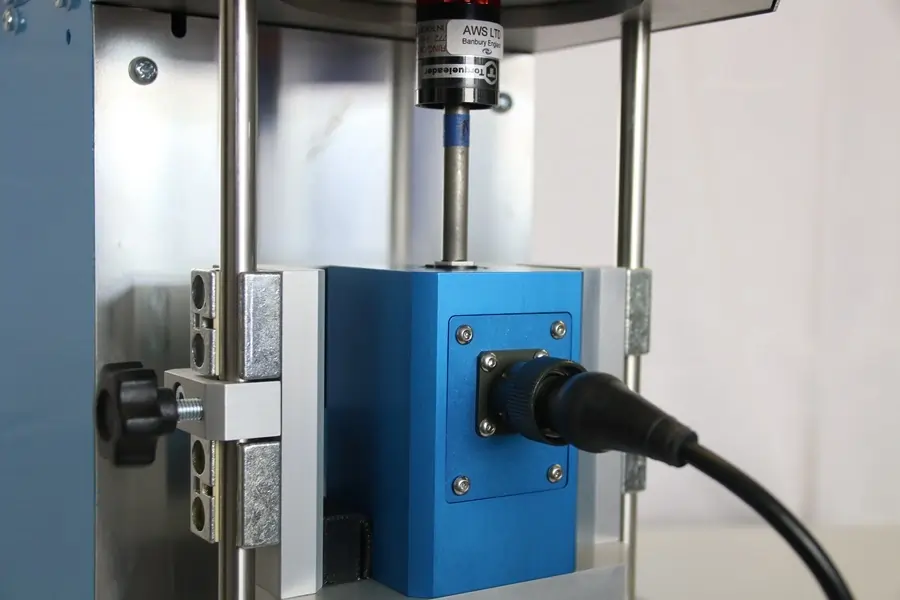
In contrast, rotary torque transducers are used to measure rotational torque. The torque measuring shaft can rotate freely in the housing, and these rotary transducers will be rated to a maximum number of RPM (revolutions per minute). These use many of the techniques that we will mention in a minute. For strain gauge types they do require power and signal output to be transmitted and this can require rotary contact devices such as slip rings. Alternatively, they can use inductive coupling to energise them, usually by radio frequency (RF) techniques. For example, they are typically used for measuring motor and gearbox drives and power tools, such as impulse and continuous power tools.
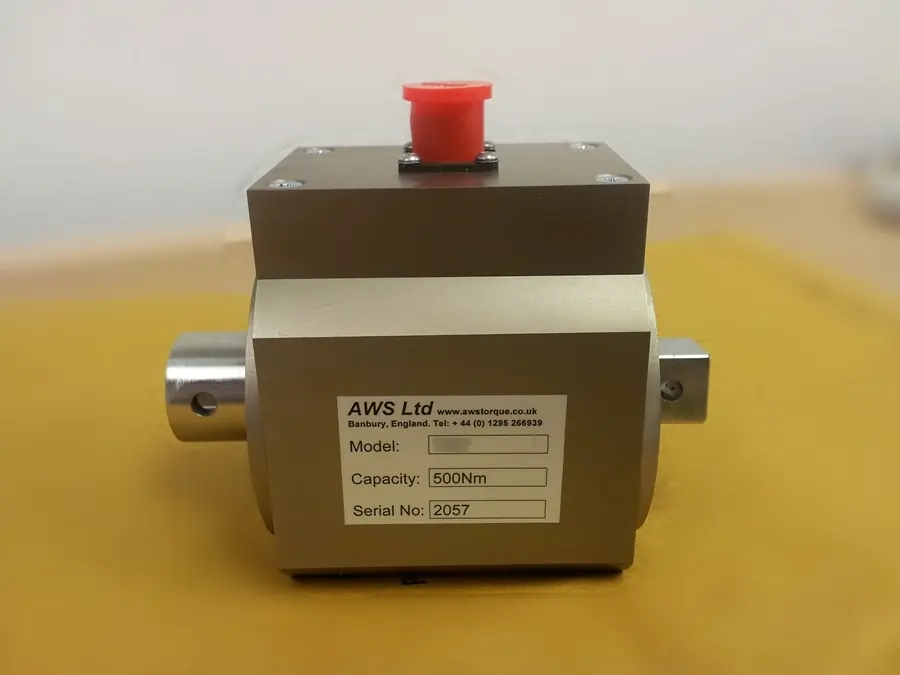
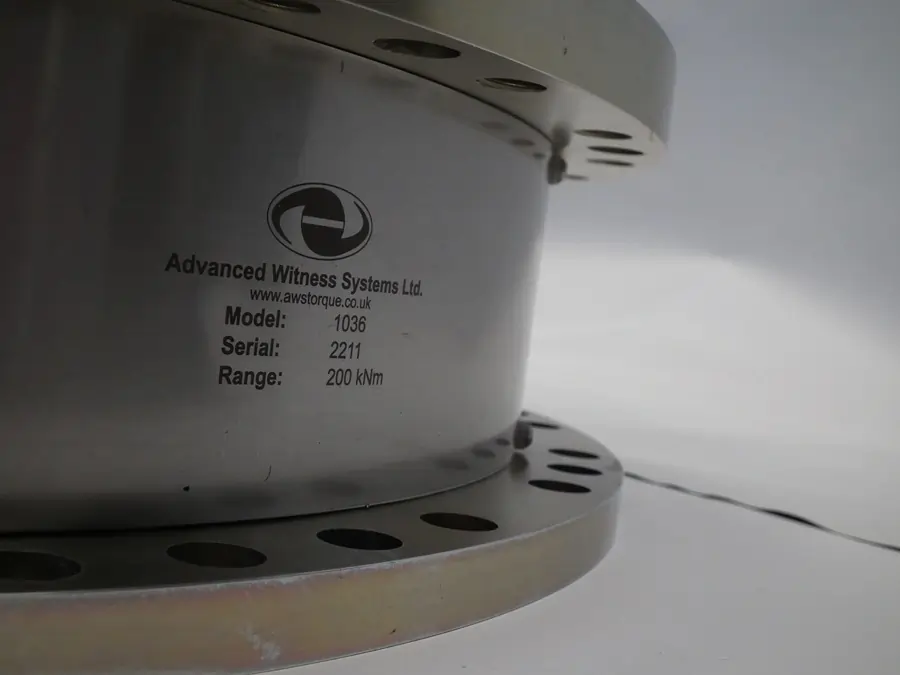
So how do torque transducers actually work? There are several methods used within torque transducers to measure the amount of torque applied.
AWS Torque Transducers make use of pairs of strain gauges within the transducer's housing to convert mechanical strain into a differential voltage signal. These voltage signals are then interpreted by a display to show your torque readings. AWS offer our Professional Transducer Display, which contains a chip which can display your torque readings via CAN bus.
The advantages of strain gauged torque transducers are that they use a very well tried and much proven technology with infinite resolution. They are also less prone to failure than other types of transducer due to their simplicity and robustness. Those types, including AWS products, that use a full wheatstone bridge configuration, are usually wired in such a way that they are able to only read torque, not bending, tension or compression. They are also very temperature stable when using compensated gauges for the strain material. Strain gauged torque transducers are usually highly accurate with long term stability. The design of the input and output mechanical interfacing influences the performance of the transducer as in many other technologies.
Optical Torque Transducers use a light source and an aligned pair of gratings. As torque is applied, a small twist on the shaft causes a change in light amplitude by a shuttering effect. The detected light intensity then produces an electrical signal which in turn is interpreted by a display to indicate your torque reading. These transducers have a lower stiffness and increased torsional spring figure as they require a greater twist (angle deformation) within the shaft to alter the shutter setting, than with strain gauges. A diagram showing the layout of an Optical Torque Transducer is shown on the left.
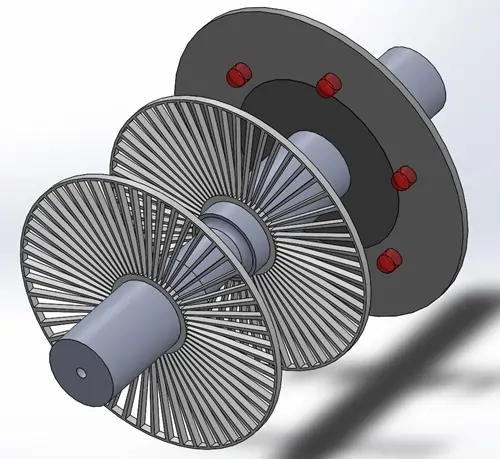
Optical Reflective Phase Detecting torque transducers use timing/phase differences caused by sensing shaft twist. They are more commonly used in rotary applications, which usually require less resolution.
Inductive Type Torque Transducers use RF inductors/coils for non contact signal coupling and function by shaft twist altering the inductive coupling and therefore phase and amplitude changes for detecting the torque value. The inductive system usually uses radio signal technology. Because of the need for inductive coil attachments, they have a larger mass on the shaft and therefore a greater inertia, which influences the sensitivity of the system being measured. This is especially so in rotary torque transducers.
Magnetic Reluctance Torque Transducers use a particular magnetic property of a material when stressed. They are usually used in very defined areas of measurement in control systems, being low cost and not needing very accurate requirements. They are usually built into transport systems.
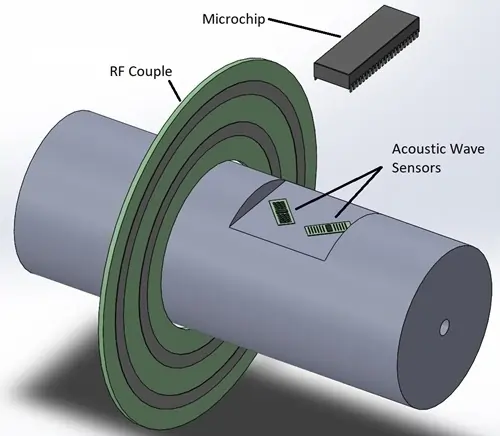
Surface Acoustic Wave Torque Transducers use acoustic wave sensors, which are bonded to the shaft. When torque is applied to the shaft, the substrate of a polished piezoelectric crystal is stressed, causing the resonant frequency of this substrate to change. This resonant frequency change between the substrates can then be detected by a RF couple also found within the transducer. This can then be interpreted by a display to show the torque reading. These types are usually used in rotary torque transducers. An diagram of an example of a Surface Acoustic Wave Torque Transducer can be seen on the left.

Much like all other measuring equipment, torque transducers will need calibrating frequently to ensure they are providing accurate readings. According to BS 7882:2017, torque measuring devices such as torque transducers should be recalibrated at least every 2 years to ensure your torque readings are accurate and reliable. On top of this, if a transducer has been impacted (e.g. dropped), misused (e.g. overloaded), or repaired, it should be recalibrated as soon as possible, as it may have drifted from its calibration as a result.
During the calibration of a torque transducer, ambient temperature can have an effect on the stability of the readout torque values, so it is important to ensure that before use, the torque transducer has been powered in advance for up to 30 minutes for thermal stability. BS 7882 states that the temperature must not change by more than ± 1°C during the calibration. This will greatly improve the accuracy and stability of the transducer's readings.
By failing to calibrate your torque transducers at regular intervals, you are potentially compromising the accuracy of all tools tested and verified on the transducer. For this reason, having calibrated torque transducers is crucial. If your torque transducer is out of calibration, so are your tools calibrated by this transducer. Therefore, you cannot guarantee the torque values used to bolt critical joints are correct.
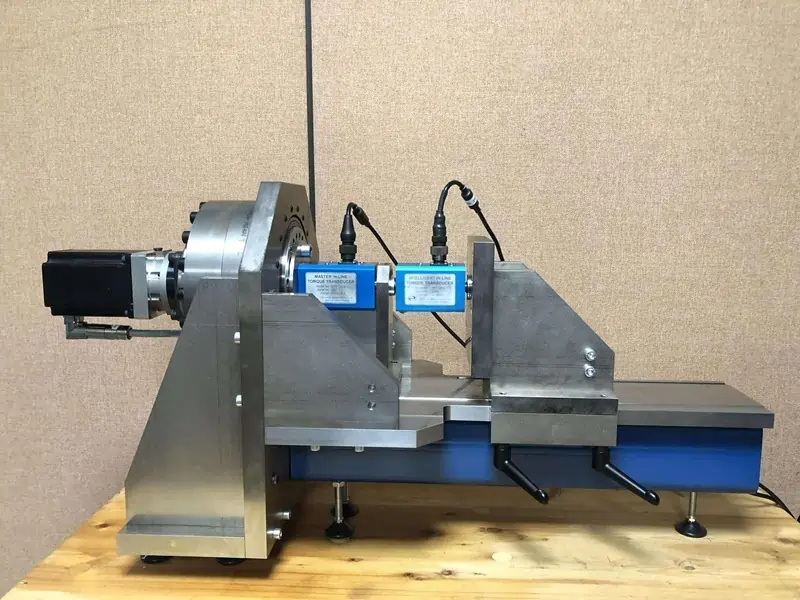
If you’re looking to bring the torque transducer calibration process in-house, we recommend you take a look at our Universal Torque Calibration Machine, which applies the torque using a motor and zero backlash gearbox rather than using beams and weights, reducing operator fatigue and time needed to complete a calibration.
The AWS range of torque transducers are split into 3 categories. These are:
Our I Series Torque Transducers include a fully intelligent instrumentation PCB within the transducer housing which allows them to communicate via CAN bus with our Professional Transducer Display. This eliminates the loss of signal and allows for longer cables to be connected between the transducer and the display. We produce In-Line, Annular and Rotary I Series torque transducers, ranging from 0.04Nm to 300,000Nm.
Our A Series Torque Transducers are designed to work with any existing analogue torque system. They provide a cheaper alternative to our I and N Series torque transducers, as well as being capable of working with our older instrumentation and any other manufacturer’s analogue displays. Like our I Series range of transducers, the A Series range also comes in In-Line, Annular and Rotary form, ranging from 0.04Nm to 300,000Nm.
Our N Series Torque Transducers are designed to work with other manufacturer’s smart display systems. It does this by using an memory chip stored within the transducer housing which stores the serial number, part number, capacity and calibration value, all of which can be interrogated by some manufacturer’s displays. The torque transducer outputs a mV reading. As with the other two categories, the N Series Torque Transducers come in In-Line, Annular and Rotary form, ranging from 0.04Nm to 300,000Nm.
Each category of torque transducer above can be supplied as an In-Line torque transducer, Annular torque transducer and Rotary torque transducer. Let’s take a look at each of these types in more detail to help you decide which option is suitable for your application.
Each category of torque transducer above can be supplied as an In-Line torque transducer, Annular torque transducer and Rotary torque transducer. Let’s take a look at each of these types in more detail to help you decide which option is suitable for your application.
If you have any questions regarding the AWS range of torque transducers, or about the general use of torque transducers in a variety of industries, feel free to contact us for a discussion.